How to Calculate Car Shipping Services?
June 3, 2024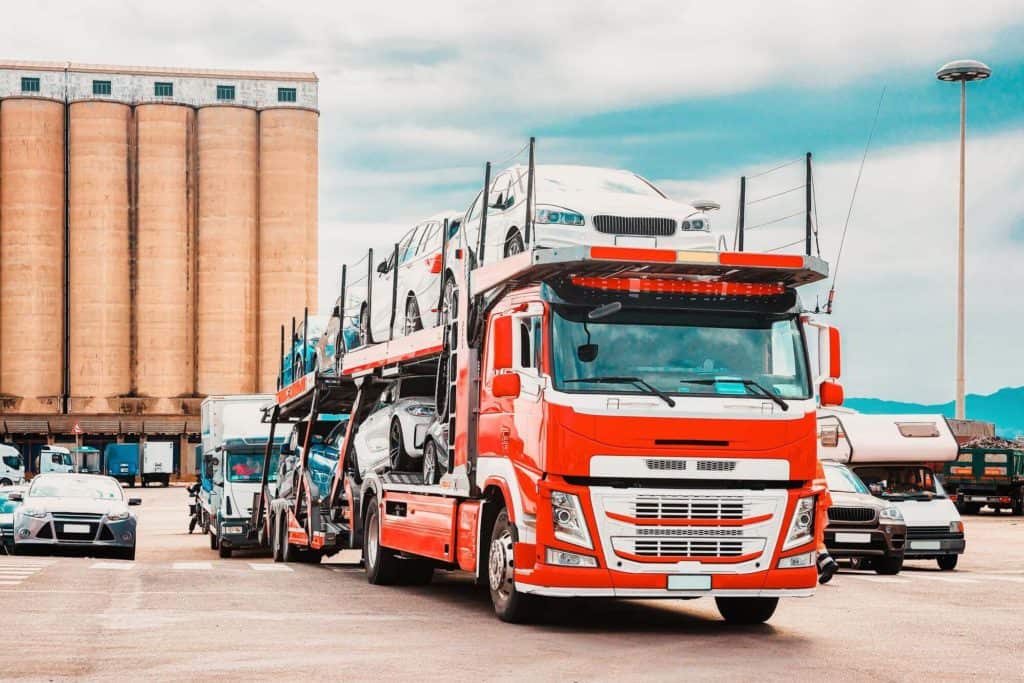
When it comes to car shipping services, everybody has the same basic problem in their minds. How much for a car to ship? Although quotes for transport cars will vary dramatically, there are a few ways to ensure that rates are as affordable as possible. It will still come with more competitive rates for newcomers to get their car driven on an open car carrier.
Savings, though, don’t have to stop there. Instead of door-to-door, you can also choose to get your car delivered terminal-to-terminal. Yeah, this means that when dropping off and picking up your car, you’ll have to arrange transportation from and to the airport.
However, this discomfort will translate into savings. Of course, with a terminal-to-terminal service, you must also consider the costs you may accrue. This includes expenses for storage, transportation costs, and charges for gas.
Related:
Is Your Car Safe During Auto Transport? Is Shipping a Car …
Things to Remember When Shipping a Car
However, this approach may be your most expedient and cheapest alternative if you live near a readily available terminal.
Car shipping service prices are unpredictable when it comes to transporting vehicles. The cost depends on a number of different factors, from the type and weight of the vehicle to the distance and company you go with. On average, however, for shorter distance travel, and as high as $1,500 for long hauls, you can expect around $500-$700. If it ends up being a little higher than that for a heavier truck, however, don’t be surprised.
Car shipping service rates rely on supply and demand as well. Right now, there are about 10,000 cars waiting to be shipped out of California. There are fewer truckers available to ship cars because of this.
If you choose an enclosed trailer for delivery, even if your vehicle is souped-up and modded, other variables that impact the shipping price include whether or not the car is in working condition.
Now that you have a better understanding of the different variables that go into the decision of a customer to have their car professionally delivered, you’re probably thinking about how much you need to budget. You have to know that the actual price you’re going to pay is dependent on several variables.
These considerations include:
BUILT AND MODEL
The most knowledgeable and customer-centric ones will have a shipping quote calculator when you visit a car shipper’s webpage. This calculator will give you an instant quote that is free and non-binding. Never pay for a quotation for delivery.
You’ll find that the Car shipping services calculator asks several different questions when you go through having a quote. Some of these have to do with the vehicle’s make and model.
Why are these variables significant? And they’re size-indicative. The longer and bigger a vehicle are, the more space a transporter takes up, and the more it would cost to drive.
Larger dimensions and changes to vehicles can also contribute to carrier adjustments.
TIME OF THE YEAR
There are a few things you need to keep in mind when it comes to seasonality. Next, for car transporters, summer happens to be the busiest time of year.
This is when the majority of individuals plan to travel. So, because of the extra demand, you can not get the best offers at this time of year.
While you would automatically believe that the cheapest time for car shipping is in winter, think twice. Ice and snow combine to make driving a large auto transporter a virtual disaster during the coldest months.
Prices and delivery times appear to go up as a result. What would be your safest bet? The higher your flexibility, the better the price you will get.
DISTANCE
For short distances car shipping services, the average cost of transporting a car is $1.96 per mile. Those that fall within a one to 500-mile range involve short distances.
So, spend at least $590 for a ride that’s about 300 miles long to cover costs and fees.
What about a longer ride? Moderate distances are considered for journeys of 500 to 1,000 miles. They run around $0.93 per mile, they come out, give or take, to $950 for 1,000 miles.
As far as long distances are concerned, you’ll pay around $0.58 per mile when you take trips of 1,500 miles or more. A journey of this length can cost you $870.
Like shopping in quantity at the supermarket, the farther you go, the better the rate per mile will be.
STATE OF VEHICLE
You’ll still need to accurately record your vehicle’s state. About why? And it’s far cheaper to ship cars that run than those who don’t.
To properly load a car onto a carrier trailer, the ability to steer, roll, and brake is crucial. If your car doesn’t have these features, then to shift it into position, the driver must rely on a winch or other equipment.
It is a time-consuming operation to deal with an inoperable car, and not one that a driver takes easily. A forklift is also required when loading. For this purpose, for vehicles that can roll, brake, and steer, many auto shippers only give quotes.
Drop-off and Pick-Up Location
You’ll want to keep in mind where the places for your pick up and drop off are located. It is because you’ll end up paying more the further the driver’s regular route.
Usually, metropolitan areas have plenty of available trucks and drivers. You will find more supply and some of the best prices since demand is high.
However, when it comes to rural areas, prices are climbing. Although an experienced and competent business should go to great lengths to secure you the best possible rate, expect to pay more in less trafficked areas no matter where you live.
The more you live off the main highway, the more you will have to end up paying.
TYPE OF TRANSPORT
We have already discussed it partially, but it is important to understand the choices available to you concerning the shipping of vehicles. By far, freight on an open carrier remains the most common and inexpensive alternative.
Open-Air carriers don’t protect vehicles from the weather or road grime, as the name suggests. They also do not shield cars from gravel and other debris from the pavement. But for passengers and ordinary drivers, they fit well.
After all, it is equivalent to a road trip to the misuse a vehicle would get on an open carrier. That said, what if you have a vehicle worthy of investment? You’ll need to pay more, in this case, to get an enclosed carrier.
Related Articles:
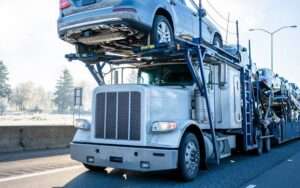
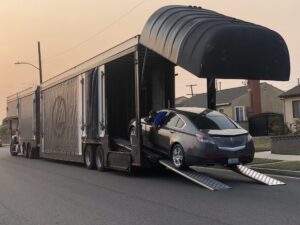




Auto Transport is not a fun thing to do that is why many people are hesitant to ship or buy a car from far locations. However, there are affordable and reliable ways to ship your car as long as you choose reputable and best moving companies.
Auto transport to your vehicle is commonly pretty safe. Here are the easy steps you can take to reduce your risk of safety risks and keep away from fraudulent groups, sketchy charges, and pesky thieves.
Also, Read: Is it Possible to Put a Car Seat in a Moving Truck?
Keep your eyes peeled during inspections: have you ever zoned out at the same time as a customer service rep rattles off terms and situations over the cellphone? We’ve all been there. But you shouldn’t make that mistake when it comes to your car inspection.
Your car may be inspected before it is loaded onto the auto transport company and after it is unloaded. In both cases, you’ll sign a file known as a “bill of lading” that describes the circumstances of your car. If the car is broken in transit, but you don’t acknowledge it on the paperwork, you could be out of luck if you want to record a claim.
Related: Is it possible to drive a leased car when moving out of state?
Get to know your Auto Transport Driver: It’s no longer too essential to realize the name and speak to a variety of your transport guy, but car shipping is something special. If something goes incorrect, the potential damages move some distance beyond $20 for a small area of your car

Ask your dealer for the name and contact information of your driver. If there’s a delay in transport, you have to get in touch.
Make sure your car is ready for auto transportation: There’s more to vehicle shipping than simply driving your automobile onto a truck and waving goodbye. From removing personal items and getting a tune-up to folding in the side mirrors and deactivating digital toll devices, there are several things you may do to prepare your vehicle for transport.
Watch out for prices that seem too desirable to be authentic: could you raise an eyebrow if a $500,000 residence suddenly has become to be had for less than a hundred thousand dollars? You need to be just as skeptical of vehicle transport costs, which can be substantially lower than the rest of the competition.
Get shipping prices with auto transport companies: protection isn’t always about the circumstance of your automobile. sometimes it’s approximately retaining your bank account blanketed from needless costs.
Make sure to get several rates before committing to an agency. now not best does that assist you to negotiate a better charge, it additionally enables you to perceive early red flags. If an organization wants to charge you or 3 times as plenty as every other automobile shipper for the same provider, it’s no longer a big stretch to suppose there might be other scammy conduct down the street.
Examine the evaluations: do your homework before hiring an auto transport provider. We recommend you take 10 minutes, consistent with the company, to study online reviews. If you see any red flags like complaints about vehicle harm, missing non-public objects, or motive force no-indicates, that’s probably an amazing indication you have to test out every other company.
Be careful with scammers: the car shipping industry is every now and then referred to as the “Wild West” because it isn’t well regulated. For some hundred dollars, pretty much absolutely everyone can begin their very own vehicle shipping carrier—and the outcomes aren’t usually quite.
The FMCSA assigns each car shipper a motor carrier (MC) number. which allows you to verify that the shipping service is properly licensed and insured. The range also helps you to look up the organization’s complaint record and accident file.
Related Articles:






When it comes to moving, choosing the right trailer size can make all the difference. We understand that finding the perfect trailer size is crucial for a smooth and hassle-free move. In this comprehensive guide, we will walk you through the factors to consider and the options available, ensuring you make the best choice for your specific moving needs.
Before choosing a trailer size, it’s essential to take inventory of your belongings. Start by categorizing your items into different groups, such as furniture, appliances, electronics, and boxes. Having a clear understanding of what needs to be moved will help you determine the appropriate trailer size.
The size of the trailer you need depends on the volume and weight of your possessions. Our experts have prepared a handy guide to help you estimate the required trailer size based on common household items.
Related: Two Men and a Truck Review
If you have delicate or valuable items that require extra care during the move, it’s crucial to choose a trailer size that allows for proper packing and protection. Opting for a larger trailer can provide more space for padding and securing fragile items, ensuring their safety throughout the journey.
In addition to volume, it’s essential to consider the weight capacity of the trailer. Exceeding the trailer’s weight limit can lead to safety issues and potential damage to your belongings. Make sure to distribute the weight evenly and avoid overloading the trailer.
When deciding on trailer size, you might be torn between renting from U-Haul and hiring professional movers. Here are some factors to consider:
Packing your belongings efficiently not only maximizes the trailer space but also ensures that your items remain intact during transit. Here are some tips for efficient packing:
We care about the environment. When choosing the right trailer size, consider whether a smaller trailer could accommodate your belongings. Reducing the size of the trailer can help decrease fuel consumption, leading to a smaller carbon footprint.
Choosing the right trailer size is crucial for a successful and stress-free move. We are dedicated to providing you with the best moving solutions. By understanding your inventory, estimating the required size, and packing efficiently, you can ensure a seamless relocation experience. Remember to consider the weight capacity, protect fragile items, and be mindful of the environmental impact of your choice. Whether you decide to rent a trailer from U-Haul or opt for professional movers, our comprehensive guide will help you make an informed decision.
Moving can be an exciting adventure, whether you’re relocating to a new city or just across town. However, it can also be a daunting and challenging task if not well-planned. One of the most critical aspects of a successful move is securing a reliable van rental. But with so many options available, how do you find the perfect van rental near you? Fear not, because we’ve got you covered with some tips and tricks to make your moving experience as smooth as possible.
Before diving into the details of how to secure a reliable van rental near you, let’s take a moment to understand why choosing a van rental is often the ideal solution for your moving needs.
The key to a successful move is planning ahead. Start by researching and comparing van rental options well in advance.
Determining your budget is essential. Know how much you are willing to spend on a van rental, including fuel costs and moving insurance.
Selecting the right van size is crucial to avoid wasting space or overpacking. Smaller vans are suitable for a studio or one-bedroom apartment, while larger models are better for larger households. Carefully assess your belongings and choose the appropriate size.
Pro Tip: Use a checklist to keep track of your items and ensure everything fits in your selected van.
Apart from the van itself, consider the additional services offered by the rental company. Look for options such as packing supplies, loading assistance, and moving equipment. These services can make your move more manageable.
Reading reviews and seeking recommendations from friends and family who have used van rental services can provide valuable insights.
Before finalizing your van rental, be sure to inquire about any potential hidden costs. These could include mileage fees, insurance, and additional charges for returning the van later than scheduled. Being aware of these costs will help you avoid surprises on a moving day.
When you pick up the rental van, thoroughly inspect it for any pre-existing damage. Document any scratches, dents, or other issues and ensure the rental company acknowledges them. This will prevent disputes over responsibility for damage when you return the vehicle.
Carefully review the rental agreement and make sure you understand the terms and conditions. Pay attention to the return policy, fuel requirements, and any restrictions on vehicle use. This will help you avoid any unexpected charges or issues during your move.
Plan your moving route and schedule in advance. Consider traffic patterns, rest stops, and potential obstacles on the road. Make a timeline for your move to ensure it goes as smoothly as possible.
Related: Should You Hire Professional Packers For Your Next Move?
Proper packing is key to ensuring your belongings arrive safely. Use sturdy boxes, packing materials, and secure moving straps to prevent items from shifting during transit. Don’t forget to label your boxes for easy identification during unpacking.
Securing a reliable van rental near you is essential for a successful and stress-free move. Starting early, setting a budget, choosing the right van size, and checking for additional services are all important steps in the process. Reading reviews, asking for recommendations, and understanding the rental agreement will help you make an informed decision.
Is there a best way to if you want to ship your car by train, Amtrak is your only option. It’s quick and reasonably priced. However, there is a significant disadvantage: Amtrak only goes between two cities (Sanford, Florida, and Lorton, Virginia). You’ll need to get quotes from standard vehicle shipping companies if you want to send your car somewhere else.
We’ll discuss the rates for both your vehicle and passenger ticket for those few consumers traveling between Sanford, Florida, and Lorton, Virginia.
Related Topic: Is Your Car Safe During Auto Transport?
Train car shipping works pretty much as it sounds. You move your automobile from one site to another, but instead of paying a car shipping company to transfer it by truck, you load it onto a train and ride alongside it.
Yes, the passenger ticket is required. You won’t be able to send the car unless you also take the train.
Many auto transport companies claim to provide rail service, but in reality, they do not. There is only one firm that provides the service, and it is Amtrak, a railroad company.
In certain conditions, you can ship a car by train. The only way to send a car by rail is via Amtrak, which has a single route from Washington, DC to Sanford, Florida (or the reverse).
Despite the fact that rail cars transport automobiles, practically all railroad franchises in the United States cater solely to businesses (e.g., car dealerships). The only exception is Amtrak car transportation, which runs daily between two East Coast cities on a single route.
In certain conditions, you can ship a car by train. The only way to send a car by rail is via Amtrak, which has a single route from Washington, DC to Sanford, Florida (or the reverse).
Despite the fact that rail cars transport automobiles, practically all railroad franchises in the United States cater solely to businesses (e.g., car dealerships). The only exception is Amtrak car transportation, which runs daily between two East Coast cities on a single route.
The average total cost of shipping a car from Lorton, Virginia to Sanford, Florida on Amtrak’s auto train is $497. Prices vary depending on the class of your passenger ticket and whether or not you choose priority offloading. The least expensive passenger ticket is $89. Standard-size autos ship for $208, and the least expensive passenger ticket is $89.
For the purposes of Amtrak automobile shipping price, if your car, truck, van, or SUV hasn’t been altered from its original factory length, it counts as a standard-size vehicle.
Train vs Truck: Cost
| Amtrak (least expensive) | Amtrak (most expensive) | Average uShip |
| $297 | $761 | $825 |
What does that mean in terms of a regular auto carrier for the same 855-mile distance?
The average cost of shipping a car along the same path as the Amtrak auto train was $825, according to uShip.
This is $528 more expensive than the lowest train option and $64 more expensive than the most expensive rail option (which includes a comfy bed and priority offloading).
The uShip quote is average, which means you might be able to find cheaper transporters. Even so, you won’t be able to find a vehicle transporter that can beat Amtrak’s low-cost car transportation.
This is $528 more expensive than the lowest train option and $64 more expensive than the most expensive rail option (which includes a comfy bed and priority offloading).
The uShip quote is average, which means you might be able to find cheaper transporters. Even so, you won’t be able to find a vehicle transporter that can beat Amtrak’s low-cost car transportation.
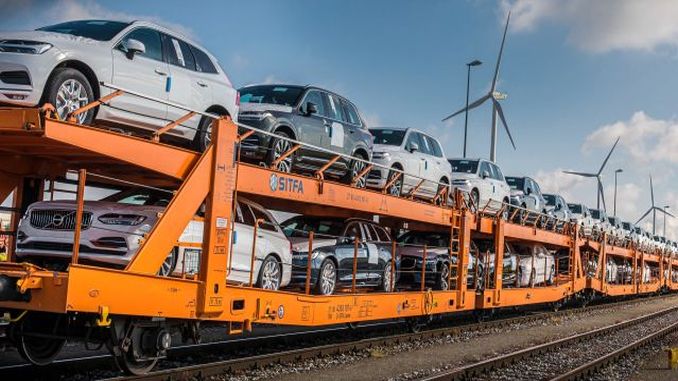
Taking the Amtrak train instead of exporting your car by truck saves you time and money. The nonstop rail route from Lorton, Virginia, to Sanford, Florida, takes 17 hours and 29 minutes, which is nearly a week and a half faster than standard vehicle transportation.
Estimated Delivery Time
| Truck | Train | |
| Estimated total delivery time | <1 Day | 11 Days |
Keep in mind that Amtrak car shipment is only available in two places across the country. You can’t beat the speed—or the price—if you reside near one of Amtrak’s two rail car hubs.
However, if you live somewhere else, you won’t be able to ship your car by rail.
Report: What’s The Cheapest Way and How to Calculate Car Shipping
No. You must purchase a passenger ticket and ride on the same train as your automobile to be shipped on the Amtrak car shipping train.
The cost of a ticket varies depending on how much comfort you desire.
The coach class is the least comfortable, but it still beats driving all day (and some of the night). You also have to pay for gas to travel nearly 1,000 miles if you drive. As a result, taking the train is both more comfortable and less expensive than taking the bus.
If you want to splash out, premium tickets are available. However, if you can take an 18-hour ride in coach class, the lower-cost Amtrak tickets should suffice.
Companies develop instructional items to attract your attention because so many people are looking for information on how to send an automobile by rail or train. Unfortunately, some of them go too far and claim to be able to provide rail service.
There is one condition, however. Do you recall the train firms that only served commercial customers? They can’t fill all of their rail cars all of the time, so they open them up to regular auto carriers.
A regular auto transport business might technically take one of these jobs and use it to deliver your automobile.
In actuality, however, this does not occur. We were unable to locate any rail transit companies.
However, we learned enough to offer a recommendation. We recommend that you seek elsewhere if the auto shipping firm you’re looking into claims to offer rail shipping on its website.
How can you trust a company with your car if they aren’t upfront about the services they provide?
No. You must live near one of Amtrak’s two hubs in Lorton, VA, or Sanford, FL, to use its auto train service. Other railroad companies, such as CSX, Union Pacific, and Sante Fe, offer service primarily to commercial organizations like car dealerships, thus regular customers cannot ship with them by train.
Car shipping by freight truck, on the other hand, is available in most US cities (check with your auto transport company to see if it can service your specific route).
| Amtrak | Autotransporter | |
| # of states | 2 | 50 |
| # of cities | 2 | 15,000+ |
| # of companies | 1 | 2,000+ |
If you want to ship your car by train, Amtrak is your best (and only) option. For roughly $500, a train transport business will transfer your automobile 900 miles in less than one day. Amtrak, on the other hand, only serves two tiny cities: Sanford, Florida, and Lorton, Virginia. Unfortunately, this means that Amtrak is unable to assist the majority of car transport customers.
If you want to transport your automobile anywhere other than the two cities served by Amtrak, you’ll need to contact one of the best car shipping firms. Because of its low costs, years of experience, and great customer evaluations, we recommend Xfinity Moving Auto Transport.






There’s a great deal to consider during the moving procedure. Choosing your moving company, pressing, storage, travel, moving utilities, schools for the little ones and so on.
When you’ve shown up at your new home, you’re prepared to settle in and unwind. Perhaps, it’s getting yourself a hot shower or, kicking up your feet and binging your preferred TV show.
These extravagances are fueled by our utilities., except if you need to recreate a force blackout, you’ll need to guarantee you’ve changed utilities before moving.
Also, Read: How to Set up Utilities When Moving to New Place?
Pro Tip: Plan weeks ahead of time for smooth moving progress. In the event that any of your utilities require installation or evacuation, you must prepare
Presently, it’s an ideal opportunity to contact these companies to move and transfer your utilities. While dropping and canceling utilities, it’s essential to impart and communicate. Thusly, these companies might suggest another service. Just as provide you with data about the utility in your future location.
In the event that your utility requires removal, book an arrangement, and ensure you’re home for it. It might be useful to make a schedule. This keeps your family composed, listing every one of your arrangements and assignments that should be done before the move.
While reaching future utilities, give your personal data, your past, and your future home. When reaching returning utilities, provide them with your new information like your new place of residence and billing information.
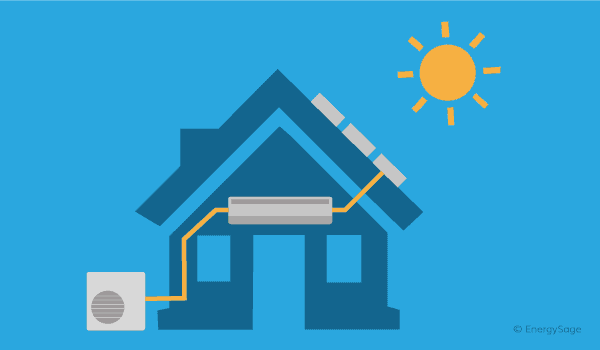
In each part of moving, the organization is critical. Also, moving or transferring your utilities are no special case. Keep a rundown of every one of your utilities, their companies, and any online logins. This allows you to be proficient, composed, and concentrated on moving day.
At the point when you’re making your rundown, incorporate the company’s utility contact data and information. This is if there should be an occurrence of any future issues with installments or bills.
Your utilities can shift from:
When you’ve made your rundown of utilities, assess your future relationship with these companies. Concentrate on whether you’re forced to change because of the area or in case you’re not happy with their services.
While focusing on basic services, location is your primary core interest. Regardless of whether you’re changing your city, territory, or country, you most likely won’t have a choice on your provider.
Also Read: Things To Do to Make Moving Day Easy and Less Stressful
Research your utility assistance area and figure out who you’ll be depending upon as your new essential service. Examine the guidelines, installments, or changes that could vary from your previous location.
For discretionary services, for example, phone, cable, internet, home security, choose whether you’re satisfied with your present services.
In case you’re fulfilled, stay with it, or locate a comparative service contingent upon your future area. If your utilities could be better, research for discretionary services that live up to your desires for a quality utility service.
Remember to record your last meter reading for your water, power, and gas before your turn.
This last reading is proof in the event of being accused of an unforeseen service bill. Recording your meter reading is confirmation of unused gas, electricity, and water.
Related Articles:
How to Budget for a Cross Country Move?
The Start-to-Finish Guide for Moving to a New Place
The Basic Things to do Before Moving to Another State
Both enclosed and open transport services are available from the leading vehicle shipping firms. Enclosed transport is normally required only when shipping a high-value vehicle or a vehicle with low ground clearance. Because it is not exposed to the elements (or criminals) during shipping, an enclosed carrier can keep your car safer than an open carrier. However, at a cost of around $1,500, it is roughly 40% more expensive.
Enclosed transportation is used by just approximately 10% of clients. If you’re carrying a car with low ground clearance or one of the numerous specialty vehicles, the extra expense can be worth it:
Related Topic: The Best Moving Companies That Provides Trailer Rental
Enclosed transportation implies your car is transported in a completely enclosed trailer on a truck with only a few other vehicles. It’s the equivalent of traveling first class on a plane (but the coach exits first since your delivery time is slower).
Your car will be trapped between up to ten other vehicles on an open truck—a car carrier exposed to the elements on all sides. It’s similar to traveling in coach on a plane (but without the windows).
According to a review of over 700 quotes, enclosed transportation costs around $1,500. Enclosed transport is often roughly 40% more expensive than delivering your car on an open carrier.
Also, Read: How To Know if Car Shipping is a Scam
| Transport type | Average cost |
| Enclosed transport $1,500 | Open transport $1,080 |
An enclosed trailer protects the car from the elements and other vehicles. Instead of sharing open space with ten other cars, your vehicle is surrounded on all sides by walls and bunks with only a few others.
Enclosed trailers ensure that your vehicle arrives at its destination without a scratch, whether it’s a new house or a car show.
We’ve all driven beside lowriders, automobiles that are built to be as near to the earth as possible. When a carrier tries to drive a car onto an open transport trailer, it will bottom out like a car going over a decent-sized speed bump.
Nobody wants their car to be destroyed, especially if the truck hasn’t yet left the parking lot.
Special equipment on some enclosed car carriers allows cars with a clearance of four inches or less to be safely lifted onto the carrier. Check with your auto transporter to determine if they offer this service.
For low-clearance cars, enclosed trailers aren’t just the best option; they’re the only option.
If you want your specialty automobile (e.g., luxury cars, sports cars, or antique cars) to have extra security in transit or if your vehicle rides four inches or less above the ground, enclosed vehicle transport is a good option. Be aware that it can cost up to 40% more than public transportation.
Because open shipping is less expensive, the top vehicle shipping firms specialize in it. Furthermore, unlike specialty cars, which can cost as much as a house to restore if damaged in transit, the expense of cleaning off dirt or repairing damage is significantly lower than the normal, daily car, so the premium for enclosed transport isn’t worth it for most shipments.
You probably don’t require enclosed transportation if you buy your automobile from a standard dealership (Honda, Ford, Hyundai, etc.).
Figure out how to set up your recreational vehicles (RVs) for an interstate move and the various sorts of transport options that are accessible.
When moving to another state, a great many people have the movers get their things and afterward drive to their new state. Yet, consider the possibility that you have more than one vehicle. Imagine a scenario where you have a cruiser, sports vehicle, or RV that you can’t drive during the move. How might you get every one of your vehicles to your new home without making multiple trips?
Luckily, there are a lot of moving companies out there to ship your recreational vehicles from your present home to your new one. This implies you have alternatives, so this is what you have to think about those choices.
Even though you can hire an expert moving company to ship your recreational vehicles for you, there’s some prep work you’ll need to deal with yourself before giving over your vehicles. The first is that you’ll need to purge the gas tank. Moving companies are not permitted to ship anything combustible, and that includes the fuel for your vehicle’s gas tank.
You’ll likewise need to eliminate any valuable resources and disable your alarm framework. Eliminate or secure accessories, for example, windscreens on motorcycles or cruisers, and removable gear and luggage holders or hardware racks on vehicles or RVs.
Also Read: How to Prepare the Night before the Move?
Finally, make a note of the vehicle’s mileage and condition, including scratches for paint, and get the driver to record them on the moving documents. This will assist you with seeing
The primary concern you’ll have to consider while employing a moving company to ship your vehicles is whether you need your vehicle to go in an open transporter or a closed transporter.

Open transporters or carriers will in general comprise two levels made of simply the steel skeleton making up the “floors” for the vehicles to lay on and enough backings to hold everything together and keep it secure. There is no rooftop, no other siding, and nothing to shield the vehicles being shipped from the elements. This isn’t ideal for bikes, classic cars, and luxury vehicles.
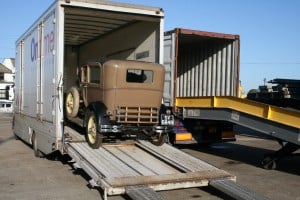
Closed carriers or transporters are completely encased trailers that do shield vehicles from the elements during transportation, making them ideal for anything you need to ensure arrivals in mint condition at your new home. Moving your vehicle on a closed transporter will in general be more costly, and you may need to hold up somewhat longer to get your vehicle, depending upon the timetable of the moving.
In case you’re preparing to move and aren’t sure how to manage your recreational vehicles, you can get a free quote from us to move them for you.